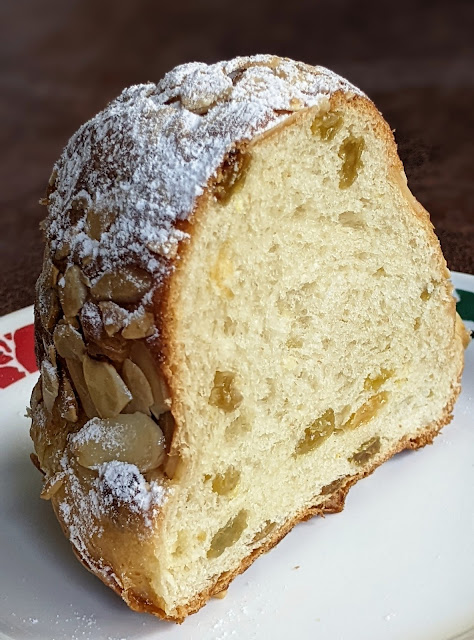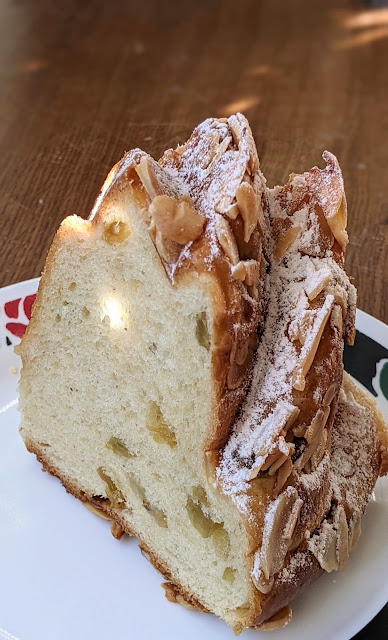To learn more about concentrated lactic acid sourdough (CLAS), please see here and here.
After eating the entire gigantic (2.4kg) Pain de Rois I made during the holidays, neither my family nor I could stand to eat another slice of "orangey" bread. Hence, the idea of making lemon-flavored bread came to mind. Many thanks to Derek, aka yozzause, who inspired me to perfect Le Cordon Bleu's Kouglof recipe; his brilliant idea and my beloved CLAS took the recipe up a notch and transformed it into a super flavorful and refreshing lemony dessert bread that I can't wait to share with you!
Kouglof = Alsatian brioche
"OR" = original recipe
"tweak" = adjustment to OR
A.
39% eggs
3% rye - CLAS, tweak
5.7% water - CLAS, tweak
10% sugar
5% lemon juice, tweak; none in OR
0.5% lemon extract, tweak; none in OR
0.25% vanilla extract, tweak; none in OR
97% Beehive AP
B.
27% full-fat milk, boiled and cooled( tweak; no pre-processing in OR)
C.
1.6% gold yeast, tweak; OR uses fresh
1.5 % salt
zest of 1 lemon
D.
29% butter, diced
E.
40% golden raisins, rum-soaked, tweak; OR uses much less
Total dough weight ~ 1140g
Mix
by Zojirushi bread machine
1. x10mins
+ A.
then gradually + ~ half of B
2. x10 mins
+ remaining B.
develop the dough to "medium-well"
3. x10 mins
+ C.
The dough must be fully developed before proceeding to the next steps.
+ D. gradually
4. x5 mins
+E.
DT 29C
Bulk
32-33C until doubled ~ 60-75 mins
In the meantime
generously butter a 9” bundt pan
Then coat it with almond slices, tweak; OR uses very little
Refrigerate the pan, tweak; not done in OR
Make lemon syrup, tweak; Derek's idea; none in OR;
juice of 3 lemons : sugar
1:1 by weight
microwave until sugar dissolves
Shape
round
poke a hole in the middle and dump it in the bundt pan
Proof
32-33C x 30-45 mins
Bake
preheat 350F, tweak; OR temp too high; no stone; my oven takes ~ 15 mins
egg wash, tweak; not done in OR (this part of the dough will become the bottom of the Kouglof)
sprinkle almond slices on top, tweak; not done in OR
350F x 30 mins, no steam
start checking doneness with a skewer
cover with foil
insulate the bottom of the bundt pan; I use a few pizza pans
350F x ~ +5 mins
Glaze, tweak; Derek's idea; not done in OR
Before inverting the Kouglof onto a wire rack, gently brush it with lemon syrup
Invert the bread onto a wire rack, which sits on top of a pan that collects syrup dripping
Gently brush or dab lemon syrup onto the bread
Let cool/dry overnight
Decorate with powdered sugar before serving
Glazed and dried overnight




20210124 Kouglof 2.0
This time I used the tricks that Leigh, aka Naturaleigh, shared to enhance the lemon flavor.
Rubbed the zest with sugar

Poked holes in the Kouglof to let the lemon syrup seep through

And I used my flower mold


The lemon flavor is more intense and the crumb is moister this time, I 

 it! Thank you, Leigh!
it! Thank you, Leigh!
